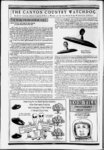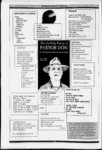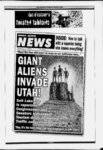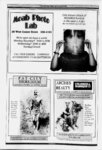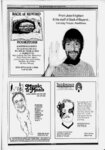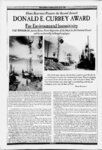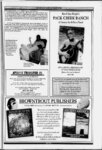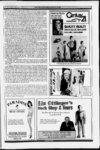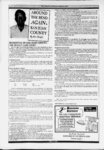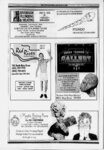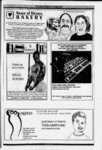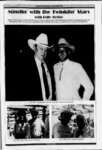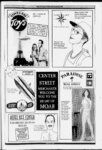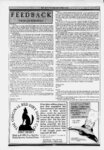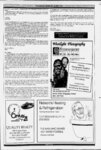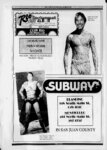| OCR Text |
Show THE CANYON COUNTRY WATCHDOG By Scott Groene, Jennie Lupton 6 Kevin Walker of the Southern Utah Wilderness Alliance A RECAP OF 1997-- THE YEAR OF THE WHINER, and ROSY PREDICTIONS FOR 1998 whining by Utah politicians over creation of the Grand National Monument Reps. Hansen and Cannon fired volley after volley of criticism against the Monument, parroting the rhetoric Utah politicians used three decades ago when Arches and Capitol Reef National Parks were established as Monuments, and Canyonlands National Park was protected by of the Interior Stewart UdalL The d minerals had been claimed valuable Representatives "locked up," Utah's school children had some how been robbed, and the State of Utah harmed. In the meantime, Utah citizen support for the monument grew. Senator Bennett's statements against the Monument matched those his father made, when he was a US Senator, against protection of what is now Canyonlands National Park. The Utah politicians never 'fessed up that it was their unsuccessful effort the previous bill that led to creation of the monument year to pass an BLM's management of the new monument came under fire, as the agency's first important decision was to allow Conoco Inc. to drill for oil, something that had never occurred before in US history. Many saw the blunder as confirmation the agency had no business managing a national monument. Utah Senator Bob Bennett introduced legislation to eliminate the new monument, but the bill languished. Rep. Hansen menaced he would introduce a similar bill, but never carried through. In an extremely troubling development, the Utah BLM gave up on replacing outdated land management plans on a comprehensive basis. Instead, the agency intends to avoid making hard decisions by throwing public land management to local advisory committees which will create guidelines for future decision making. A 1997 example of this tack was the creation of grazing guidelines for Utah public lands by a private resource advisory committee dominated by industry. The guidelines crown the cow king of our public lands (the agency first bestowed this title decades ago, but the latest action preserves the bovine monarchy). The standards lack measurable criteria, and water down existing national standards, which combined will ensure the ongoing grazing damage will continue. Experience in southern Utah demonstrates that consensus groups can't make hard decisions, serve to protect the status quo, and waste resources. As a result of this new direction by State Director Bill Lamb, much of Utah's public lands will remain ORV use and mineral development. from unprotected The Forest Service began a new round of new forest plans which must address the issue of unprotected Utah forest wilderness. On the wilderness legislative front, Utah wilderness advocates were cheered when legislation to protect 5.7 million acres of Utah BLM wilderness was introduced in the U.S. Senate for the first time. As 1997 drew to a close, the House version of the legislation had over 125 cosponsors, the highest number since the bill was first introduced. BLM's new wilderness inventoiy remained stalled by court action brought by Utah's Governor Mike Leavitt, who apparently fears an accurate accounting of the remaining BLM wilderness in our state. On the front. Rep. Cannon introduced legislation to open millions of acres of the Redrock to development, a bill which disappeared like a stone in a well soon after it was printed. Rep. Hansen threatened, but foiled, to introduce his own 1997 Staircase-Escalan- brought non-sto- p traveled at the school children's expense to DC to lobby against wilderness, and SITLA to all of the Monument hearings, personnel, again on education's dime, chartered flights where they advocated for coal development in the area. SITLA also filed litigation against die creation of the monument, which raised the with no apparent benefit for question why SITLA wasted money on a shaky lawsuit for Utah's education revenues education, when the agency has a legal duty to maximize advocate for higher grazing, oil, or system. Probably for the same reason SITLA does not te then-Secreta- ry factually-challenge- anti-wilderne- non-planni- ss ng anti-wildern- anti-wildern- ess bill The State Institutional Trust Lands Administration (SITLA), the Utah agency responsible for managing Utah state lands for the benefit of school children, continued to publicly serve as a mouth piece for advocates. During 1997, SITLA director Dave Terry anti-wildern- mining rental rates on state lands. SIT LA is controlled by a board of directors, and under Utah law the nominations forTLA's board are determined in part by the livestock industry, the Utah Petroleum Association, and the Utah Mining Association. Given the board's composition, it should comes as no surprise the organization expended money on a lawsuit to open the new monument to oil drilling, rather than on our school kids. During the spring, the Utah Senators rallied behind Alaska Senator Ted Steven's effort to hold up emergency flood relief legislation with provisions that would have legitimized county claims that cow and dog sled trails are actually "constructed highways" as to prevent the protection of wilderness. Public pressure to free money needed fen natural disaster relief for California, the Dakotas and Minnesota forced the renegade Senators to drop their demands. Rep. Cannon, presumably to improve his voting record, introduced BLM land to Arches National Park. Many were legislation to add a small piece of to find The Wilderness SUWA, surprised Society, and The Sena Chib opposing the until learned Cannon intended to break apart a wilderness proposal by legislation, they BLM land transferring already protected as Wilderness Study Area to the National Park, and that NFS Superintendent Walt Dabney was considering the construction of a 4WD accessible campground should the transfer take place. Cannon's bill is certainly not as egregious as some of the other boneheaded proposals by the Utah Congressional delegation, but will probably result in a quiet canyon becoming just another victim of industrial tourism. The Utah BLM proved it still needs to be watchdogged when it tried to conduct a massive chaining in western Utah without notice to the public or environmental studies. The chaining became public when archaeologists complained BLM was ignoring cultural sites. Native Americans shut down the mess with a lawsuit The Sierra Club and Glen Canyon Institute's effort to drain Lake Foul gained legitimacy when Rep. Hansen conducted a congressional hearing on the issue. As an indication of growing concern for the environment in the State, County Commissioners from Salt Lake County threatened to stop contributing to the Utah Yearning for an Earthly Connection, Farmers find the last vestiges of farm land Alien in Moab City Limits. Coming this Spring: Fertile lend for growing vegetables, herbs, flowers... ffa QD, I always wanted to own a tractor. w 2221 SQ) 259-22-67 nruT THE TOM TILL GALLERY on Main Street. |







